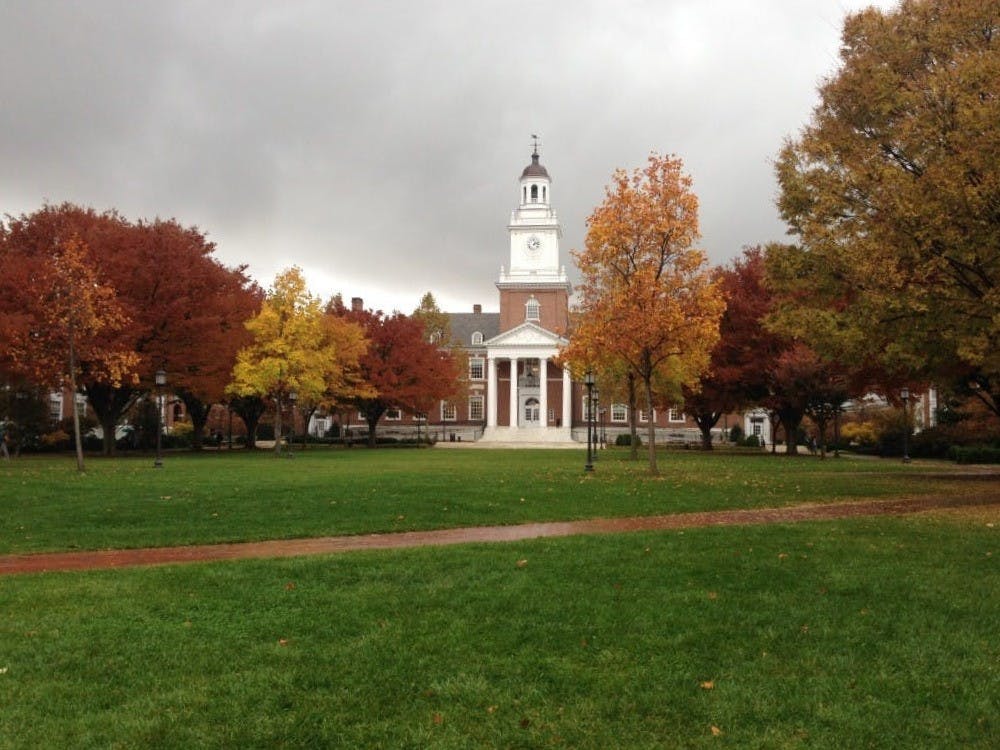University leaders held a virtual town hall on Sept. 18 to inform students about updates to the Roadmap on Diversity and Inclusion and the Roadmap 2020 Task Force.
The Roadmap was originally published in the fall of 2016 with the intention of fostering greater diversity within the University’s faculty, students, staff, climate and greater community.
At the town hall, Provost Sunil Kumar noted that the University has made significant strides toward diversity and inclusion since 2016, including ending legacy admissions and changing hiring processes.
“We have seen real and measurable progress... but by no means should you mistake what I’m saying as a victory lap,” he said. “There’s still a lot more to be done, and structural change requires consistent, persistent and deliberate efforts from hundreds of people across the institution.”
According to Kumar, under the Roadmap, faculty, undergraduate and graduate diversity have increased. Vice President for Human Resources Heidi Conway also reported that every employee group saw at least a three percent increase in minority representation.
In 2010, underrepresented racial minorities made up only 14.9 percent of the freshman class, but in 2019, that number had increased to 32.5 percent.
In an interview with The News-Letter, Senior Niat Habtemariam shared that she appreciated the University’s attempts to make the student body more diverse.
“As someone who’s Black, I’ve definitely seen an increase in the percentage of accepted Black students on campus,” she said. “It's nice to see people that look just like me.”
However, Habtemariam pointed out that the University still does not have as much Black representation among faculty. Additionally, she suggested releasing a more detailed breakdown of the student body’s identities in order to better understand which groups are underrepresented.
Sophomore Feven Welde told The News-Letter in an interview that while she appreciated the University’s efforts, it is important to keep student voices at the forefront of discussions about diversity.
“[The University should be] listening more to what the students are looking for rather than what they believe is the best way to get more diversity on campus,” she said.
Welde argued that inclusion means not only accepting diverse students but also supporting them and their organizations.
Habtemariam noted that despite the number of minority students increasing, she still sometimes feels out of place as a Black student on campus. Groups like the Eritrean and Ethiopian Student Association, where she is vice president, help her feel more at home.
“In some instances, I’m the only Black student in the classroom,” Habtemariam said. “I feel like I’m more a part of the Hopkins community when I’m part of those diverse places.”
University officials drafted the Roadmap following demands the Black Student Union made in November 2015 in the wake of the Baltimore Uprising, a series of protests that followed Freddie Gray’s death from injuries sustained in the custody of the Baltimore Police Department. The University’s recent antiracist measures are very similar to those from 2015.
Many students worry that the University is not doing enough and that the Roadmap 2020 Task Force’s promises may turn out to be performative.
At the town hall, University President Ronald J. Daniels admitted that Hopkins has made such mistakes in the past.
“I read articles from 1968, from 1993, when students and faculty were asking for many of the same things that students were asking for five years ago, and the administration was in turn responding with many of the same promises that I was,” he said. “This really caused an epiphany on my part that something had to change.”
Daniels emphasized that it was important for the University to follow through on its promises of diversity under the Roadmap, especially considering the recent national discussions surrounding police brutality and racial inequality.
“At Hopkins and at other institutions, far too many of the efforts grapple in a moment in time with issues of race and diversity and don’t transfer out of those moments,” he said. “We must use this moment to deepen our resolve, to dig more deeply and to move with greater urgency to advance antiracism, equity and inclusion within our institution and within our city.”





